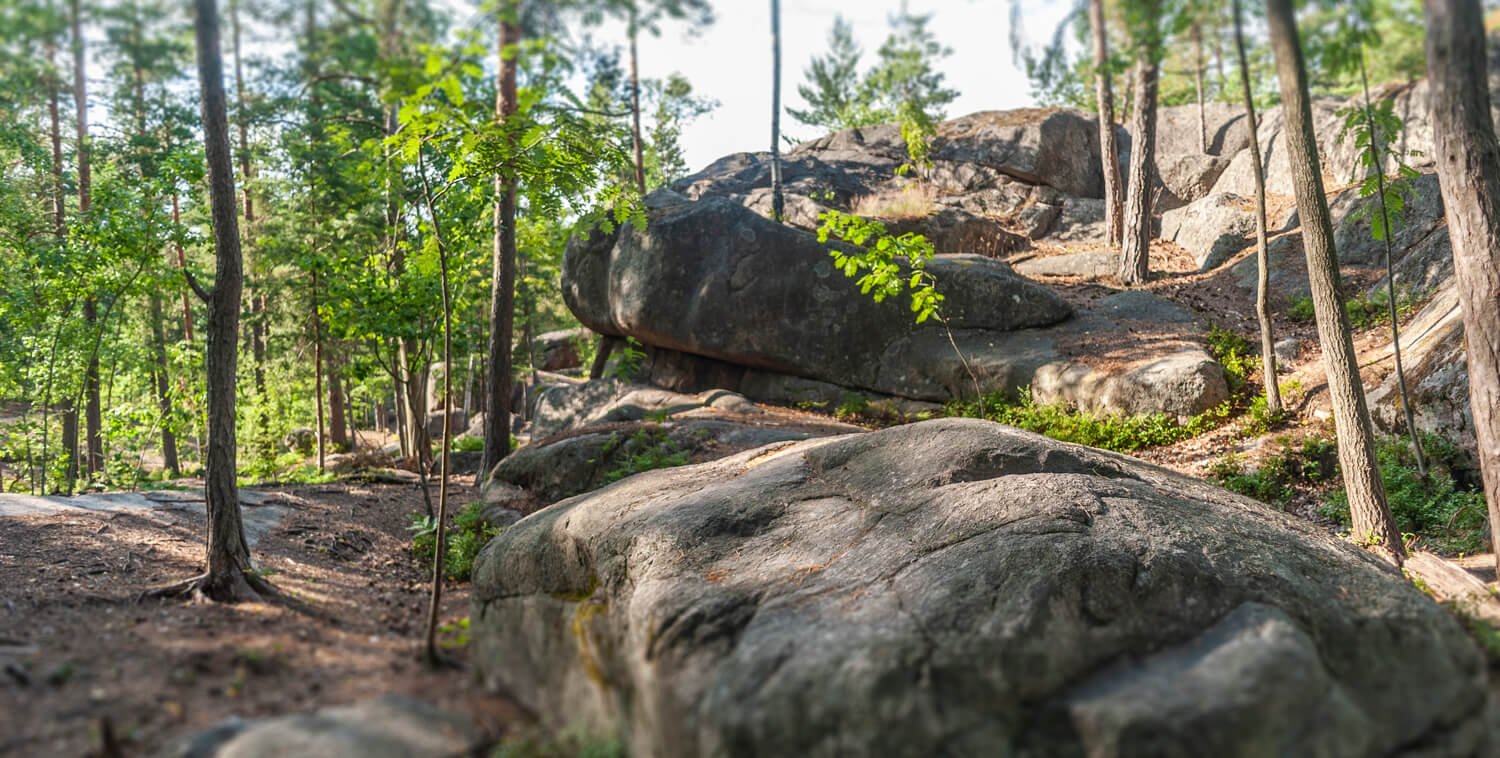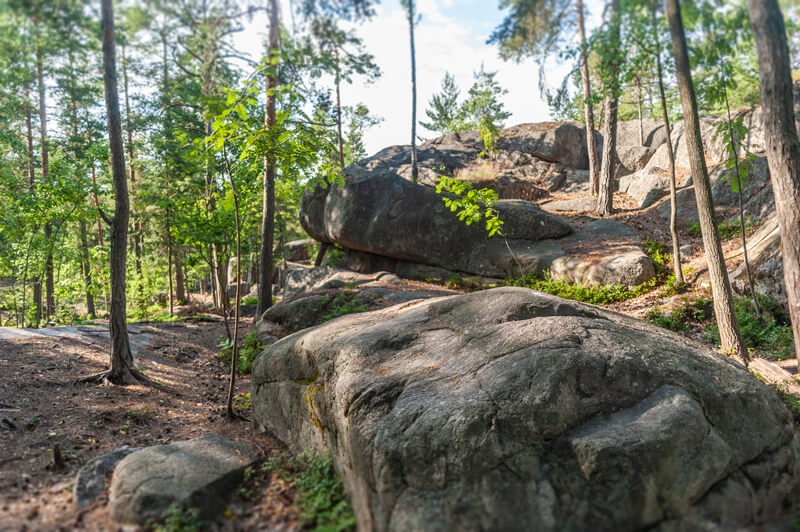Korkeakallionpuisto’s artillery battery was starting to become covered in vegetation as nature took over but, in 2004 and 2008, some clearing was conducted in the park and passage was directed with corridors and bridges. The lighting in the area was also enhanced and the level of maintenance of the park was improved.
Artillery battery 65
Base VI Helsinki, Myllypuro, Battery 65
The Myllypuro artillery battery 65 was a part of Sveaborg’s chain of land fortifications, built during the First World War. Built in 1915, the battery is a quite well-preserved and complete entity. In addition to four artillery stations, it consists of ammunition storage facilities, shelters and communication trenches. The battery has military-historical and scientific value, and it is a part of Myllypuro’s identity and local history.
Background
The construction of the Myllypuro artillery battery was started in May 1915 as a part of the construction of the Sveaborg land fortifications. The ring surrounding Sveaborg, now known as Suomenlinna in Finnish, comprised the naval front and three land front zones and was built to provide protection for Russia and its then capital St Petersburg from Germany’s attacks. Similar fortifications were also built elsewhere around the Gulf of Finland, for example in front of Tallinn, Estonia. The construction project was quite significant in scale for the time, one of the most significant fortification complexes built during the First World War.
Description
Located in Myllypuro, the battery comprises of four U-shaped artillery stations, each with room for a 280 mm mortar. Each artillery unit weighed approximately 26,000 kg together with its platform. The artillery units’ range was 8.7 kilometres, and the main bearing was north-east. The ten-metre-wide artillery stations were dug into the rock and lined with concrete. In the two southern-most stations, you can still see the round concrete platform. In the front section of each station, there were two ammunition storage alcoves, a walled-up small shelter and two two-room shelters between the stations, the entrance corridor of which connected the neighbouring artillery stations to each other. Similar two-room shelters are also located at the end of the northern and southern-most stations and the southern end of the battery. An unsupported communication trench runs along the footpath, previously reinforced with wooden structures.
From the northern end of the artillery battery, a communication trench supported with concrete and wooden structures ran to the crew shelters. The roofs of the shelters built of concrete and stone in the western section of the battery have collapsed, but their concrete flues are still standing. The chimneys are suspected to have been related to bakery activities, for example, but their original purpose remains unclear. On the western side of the fortification facility, there is an old cannon road.
After the First World War
Despite the immense efforts, the fortification was never used for its original purpose, because the Russians retreated from the city in the spring of 1918 as the Germans approached.
After the war and after Finland became independent, the land fortifications were left unused. The fortifications began to become dilapidated. They were stripped of all useful material: for example the steel beams supporting the covered structures have been blown off. Some of the shelters’ doorways were later walled shut, so that they would not attract unwanted users. Some of the fortifications in the Helsinki metropolitan area were gradually destroyed by the building of new residential areas and other construction.
However, interest in the fortifications and their historical value started to rise again in the 1960s. In 1971, the land fortification facilities from the First World War were defined as fixed antiquities protected by the Antiquities Act. This means that digging, covering, altering, damaging, removing or otherwise tampering with the facilities without permission is prohibited.
Significance today
According to the inventory survey conducted in 2014 by the National Board of Antiquities, the battery is structurally unique and in good condition. The battery is one of Finland’s significant built cultural environments, and it has both national and international military-historical value.



In addition to its historical value, a part of the surroundings of the battery is a protected vegetation area. The area is home to the regionally endangered one-flowered wintergreen and softleaf sedge, as well as species that came with the Russian troops, such as false oat-grass and smooth brome. Due to the delicate nature of the wetlands, unnecessary passage through the wettest parts of the fortification should be avoided.


